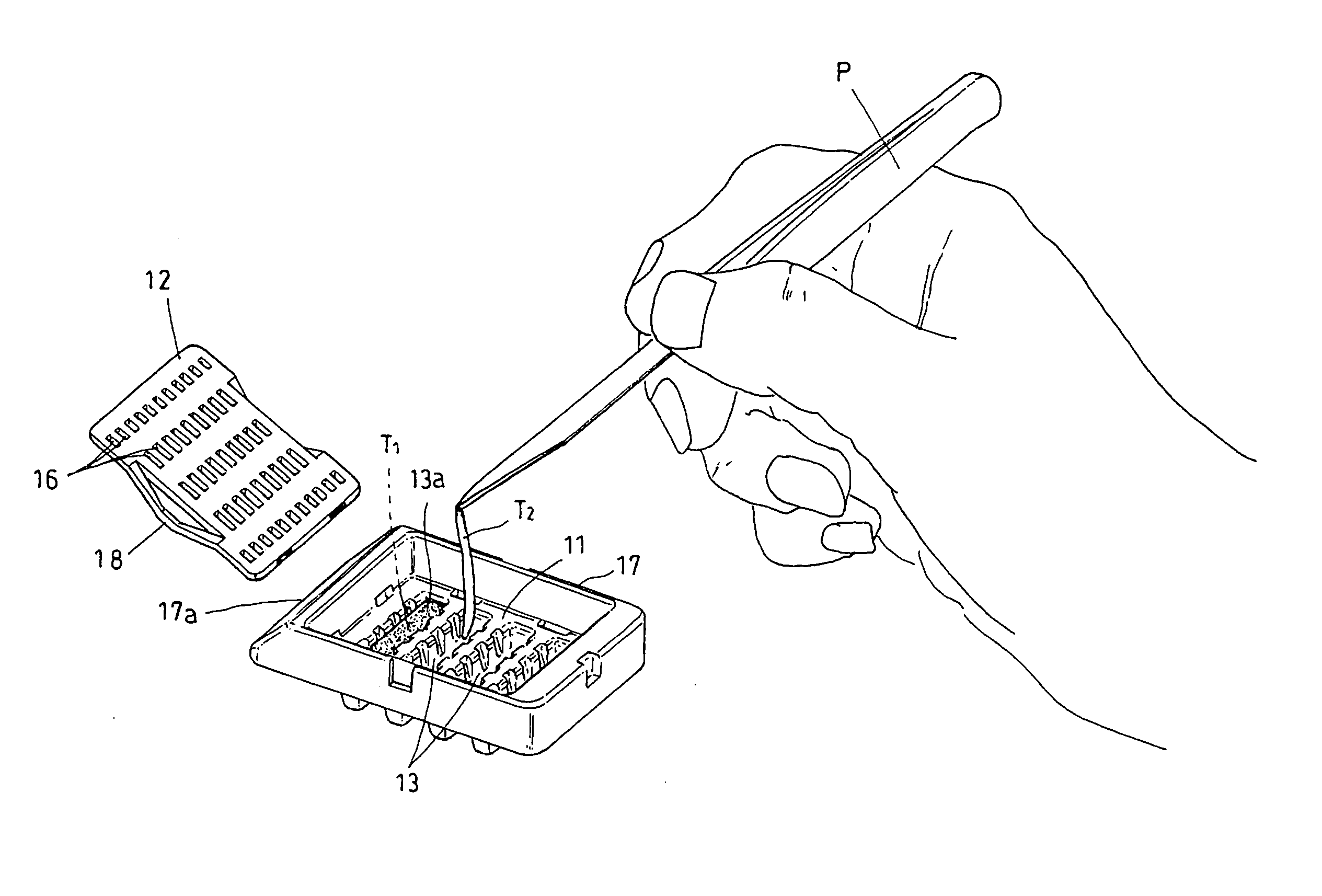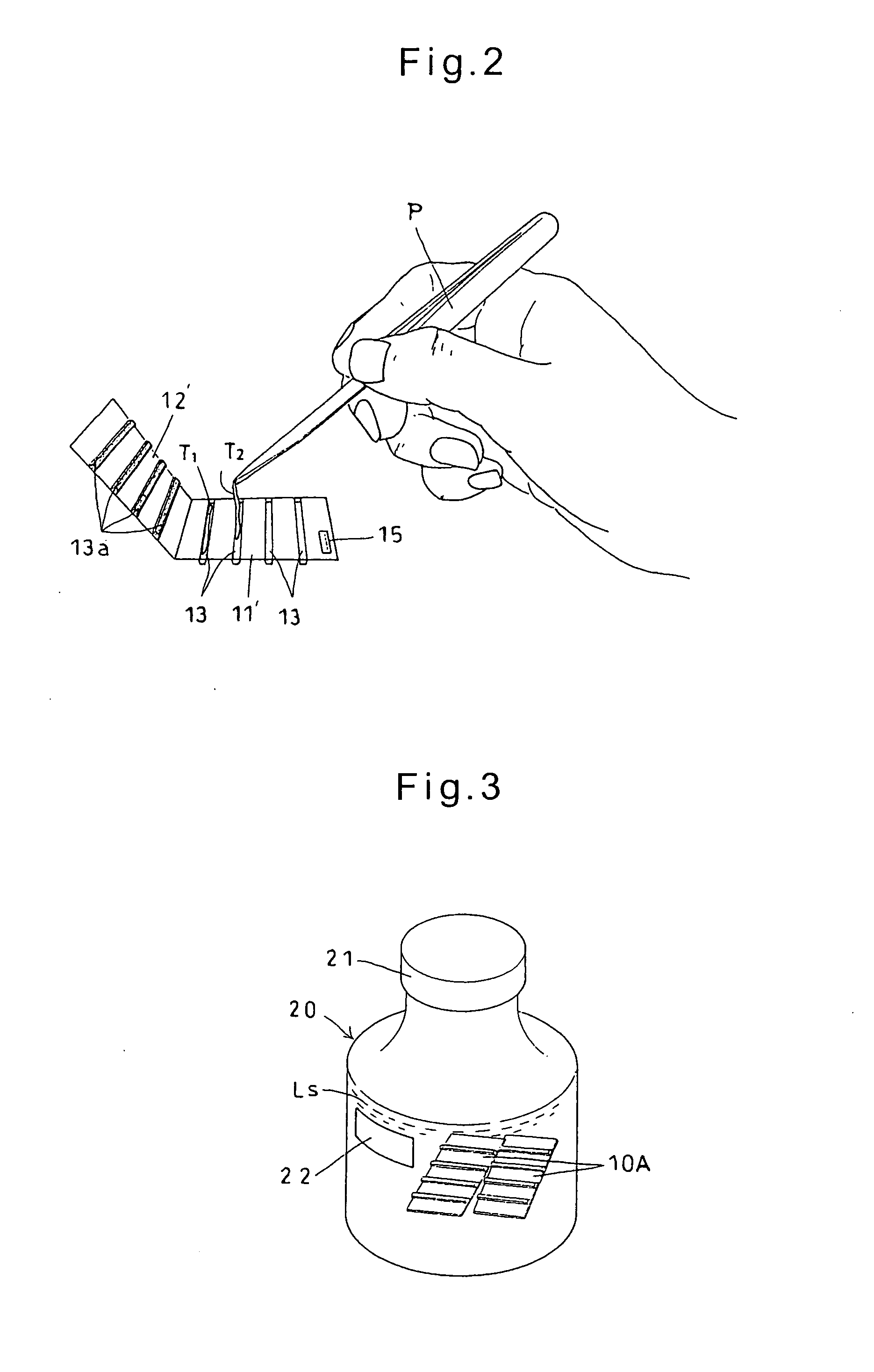Cassette for Fixing, Embedding and Slicing Biological Tissues and Method of Using the Cassette
a technology of biological tissues and cassettes, applied in the field of cassettes for fixing, embedding and slicing biological tissues, can solve the problems of difficult to form good specimens, biological tissues may be contaminated with each other, and biological tissues may be partially crushed and damaged, so as to prevent misplacing and mistaking of tissues, save time and labor, and form easily
- Summary
- Abstract
- Description
- Claims
- Application Information
AI Technical Summary
Benefits of technology
Problems solved by technology
Method used
Image
Examples
first embodiment
[0069]Now the embodiments are described with reference to the drawings. FIGS. 1(a) and 1(b) show a cassette 10A of the first embodiment for fixing, embedding and slicing biological tissues. In particular, FIG. 1(a) is a perspective view of the cassette, and FIG. 1(b) is a sectional view taken along line B-B of FIG. 1(a). The cassette 10A has a plurality of grooves in its bottom, and is used to fix, embed and slice strips of biopsy tissues of e.g. liver, prostate or kidney. FIG. 8A shows a cassette according to another embodiment of the invention, which will be described hereinafter. As shown, the cassette 10A comprises a single elongated thin plastic sheet that is folded in half along a fold line 14 to form a lower base sheet 11′ and an opposed upper lid sheet 12′. The plurality of grooves 13 are formed in the base sheet 11′ in rows.
[0070]Sponge members 13a are stuck on the bottom surface of the lid sheet 12′ at positions corresponding to the respective grooves 13 of the base sheet ...
second embodiment
[0083]In FIGS. 9(a) and 9(b), these “steps” are compared. FIG. 9(a) shows the steps carried out using the cassette embodying the invention. FIG. 9(b) shows the steps carried out using a conventional cassette. As will be apparent from these figures, in the conventional arrangement, tissue specimens taken in a hospital have to be transferred first into an embedding cassette and then into a tray of an embedding device in a tissue laboratory. By using the cassette embodying the present invention, once the tissues are placed in the cassette (F1), it is never necessary to transfer the tissue to another container until the final staining step (F2) is complete. This is true for the following modified embodiments and the second embodiment, too.
[0084]FIG. 8A shows (first to third) modified examples (cassettes 10A′, 10A″ and 10A′″) of the first embodiment. The cassette 10A′ of the first modified example shown in (a) of FIG. 8A includes a base sheet 11′ having frames 13c protruding downwardly (...
PUM
 Login to View More
Login to View More Abstract
Description
Claims
Application Information
 Login to View More
Login to View More - R&D
- Intellectual Property
- Life Sciences
- Materials
- Tech Scout
- Unparalleled Data Quality
- Higher Quality Content
- 60% Fewer Hallucinations
Browse by: Latest US Patents, China's latest patents, Technical Efficacy Thesaurus, Application Domain, Technology Topic, Popular Technical Reports.
© 2025 PatSnap. All rights reserved.Legal|Privacy policy|Modern Slavery Act Transparency Statement|Sitemap|About US| Contact US: help@patsnap.com



